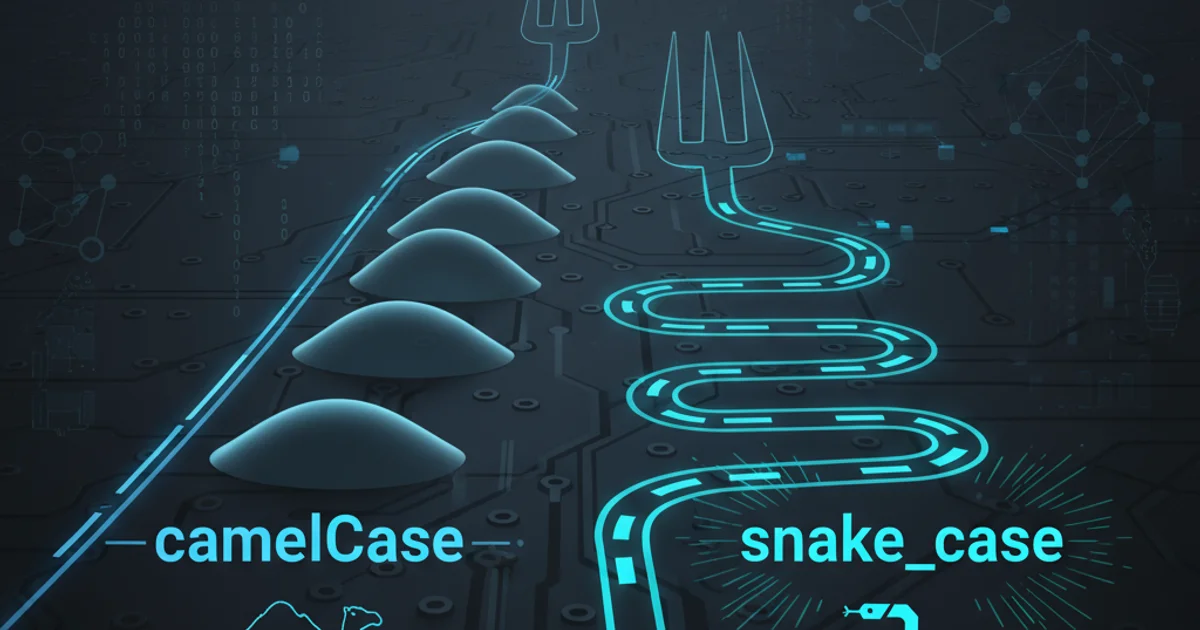Java String to JSON conversion
Categories:
Converting Java Strings to JSON: A Comprehensive Guide

Learn various techniques to transform Java Strings into valid JSON objects, covering common libraries and best practices for robust web service communication.
In modern web development, Java applications frequently interact with web services and APIs that communicate using JSON (JavaScript Object Notation). Converting Java objects or raw String data into a valid JSON format is a fundamental task. This article explores different approaches to achieve this, focusing on popular libraries like Jackson and Gson, and discusses scenarios where manual parsing might be necessary.
Understanding JSON Structure and Java String Representation
Before diving into conversion methods, it's crucial to understand what constitutes a valid JSON string. JSON is a lightweight data-interchange format that is easy for humans to read and write, and easy for machines to parse and generate. It is built upon two structures:
- A collection of name/value pairs (e.g., a Java
Mapor object). - An ordered list of values (e.g., a Java
Listor array).
When dealing with a Java String that represents JSON, it means the string's content adheres to these structural rules. For example, {"name": "John Doe", "age": 30} is a valid JSON string representing an object, while ["apple", "banana"] is a valid JSON string representing an array.
flowchart TD
A[Java String Input] --> B{Is String Valid JSON?}
B -->|Yes| C[Parse with Library (Jackson/Gson)]
B -->|No| D[Handle Invalid Format]
C --> E[JSON Object/Node]
D --> F[Error Handling/Correction]
E --> G[Process JSON Data]
F --> GWorkflow for converting and validating a Java String as JSON.
Using Jackson for String to JSON Conversion
Jackson is one of the most popular and powerful JSON processing libraries in Java. It provides an ObjectMapper class that can read and write JSON, either to and from basic POJOs (Plain Old Java Objects) or directly to a tree model (JsonNode).
To convert a Java String containing JSON data into a Jackson JsonNode (which represents the JSON structure), you typically use the readTree() method. This is particularly useful when you don't have a predefined Java class for the JSON structure or when you need to navigate the JSON dynamically.
import com.fasterxml.jackson.databind.JsonNode;
import com.fasterxml.jackson.databind.ObjectMapper;
public class JacksonStringToJson {
public static void main(String[] args) {
String jsonString = "{\"name\": \"Alice\", \"age\": 25, \"city\": \"New York\"}";
ObjectMapper objectMapper = new ObjectMapper();
try {
JsonNode jsonNode = objectMapper.readTree(jsonString);
System.out.println("JSON Node: " + jsonNode.toPrettyString());
System.out.println("Name: " + jsonNode.get("name").asText());
System.out.println("Age: " + jsonNode.get("age").asInt());
} catch (Exception e) {
e.printStackTrace();
}
}
}
Example of converting a JSON String to a Jackson JsonNode and accessing its elements.
com.fasterxml.jackson.core:jackson-databind to your pom.xml.Using Gson for String to JSON Conversion
Gson is another widely used Java library for serializing and deserializing Java objects to/from JSON. Developed by Google, it's known for its simplicity and ease of use. Similar to Jackson, Gson can parse a JSON String into a generic JsonElement or directly into a custom Java object.
When you have a JSON String and want to parse it into a generic JSON structure, JsonParser (or Gson.fromJson() with JsonElement.class) is your go-to. If you have a specific Java class that matches the JSON structure, Gson.fromJson() can directly deserialize the string into an instance of that class.
import com.google.gson.Gson;
import com.google.gson.JsonElement;
import com.google.gson.JsonObject;
import com.google.gson.JsonParser;
public class GsonStringToJson {
// Define a simple POJO for direct deserialization
static class User {
String name;
int age;
String city;
@Override
public String toString() {
return "User{name='" + name + "', age=" + age + ", city='" + city + "'}";
}
}
public static void main(String[] args) {
String jsonString = "{\"name\": \"Bob\", \"age\": 30, \"city\": \"London\"}";
Gson gson = new Gson();
// 1. Convert to a generic JsonElement (JsonObject in this case)
JsonElement jsonElement = JsonParser.parseString(jsonString);
JsonObject jsonObject = jsonElement.getAsJsonObject();
System.out.println("JSON Object (generic): " + jsonObject.toString());
System.out.println("Name: " + jsonObject.get("name").getAsString());
// 2. Convert directly to a POJO
User user = gson.fromJson(jsonString, User.class);
System.out.println("User POJO: " + user);
}
}
Example of converting a JSON String to a Gson JsonElement and a custom POJO.
@JsonProperty in Jackson or @SerializedName in Gson) to map them correctly.Manual Parsing (When Libraries Aren't an Option)
While using libraries like Jackson or Gson is highly recommended for robustness and ease of use, there might be niche scenarios where you need to parse a JSON string manually. This could be due to extremely tight memory constraints, a very simple and predictable JSON structure, or an environment where external dependencies are strictly forbidden. Manual parsing typically involves string manipulation, regular expressions, or character-by-character iteration.
However, manual parsing is prone to errors, especially with nested structures, escaped characters, and varying data types. It's generally discouraged for anything beyond the most trivial JSON strings.
import java.util.HashMap;
import java.util.Map;
public class ManualJsonParsing {
public static void main(String[] args) {
String jsonString = "{\"id\":\"123\",\"status\":\"active\"}";
Map<String, String> data = new HashMap<>();
// This is a very simplistic example and will break with complex JSON
// Not recommended for production use!
String cleanedString = jsonString.substring(1, jsonString.length() - 1);
String[] pairs = cleanedString.split(",");
for (String pair : pairs) {
String[] keyValue = pair.split(":");
if (keyValue.length == 2) {
String key = keyValue[0].trim().replaceAll("\\"", "");
String value = keyValue[1].trim().replaceAll("\\"", "");
data.put(key, value);
}
}
System.out.println("Manually parsed data: " + data);
}
}
A highly simplified and fragile example of manual JSON string parsing. Use with extreme caution.